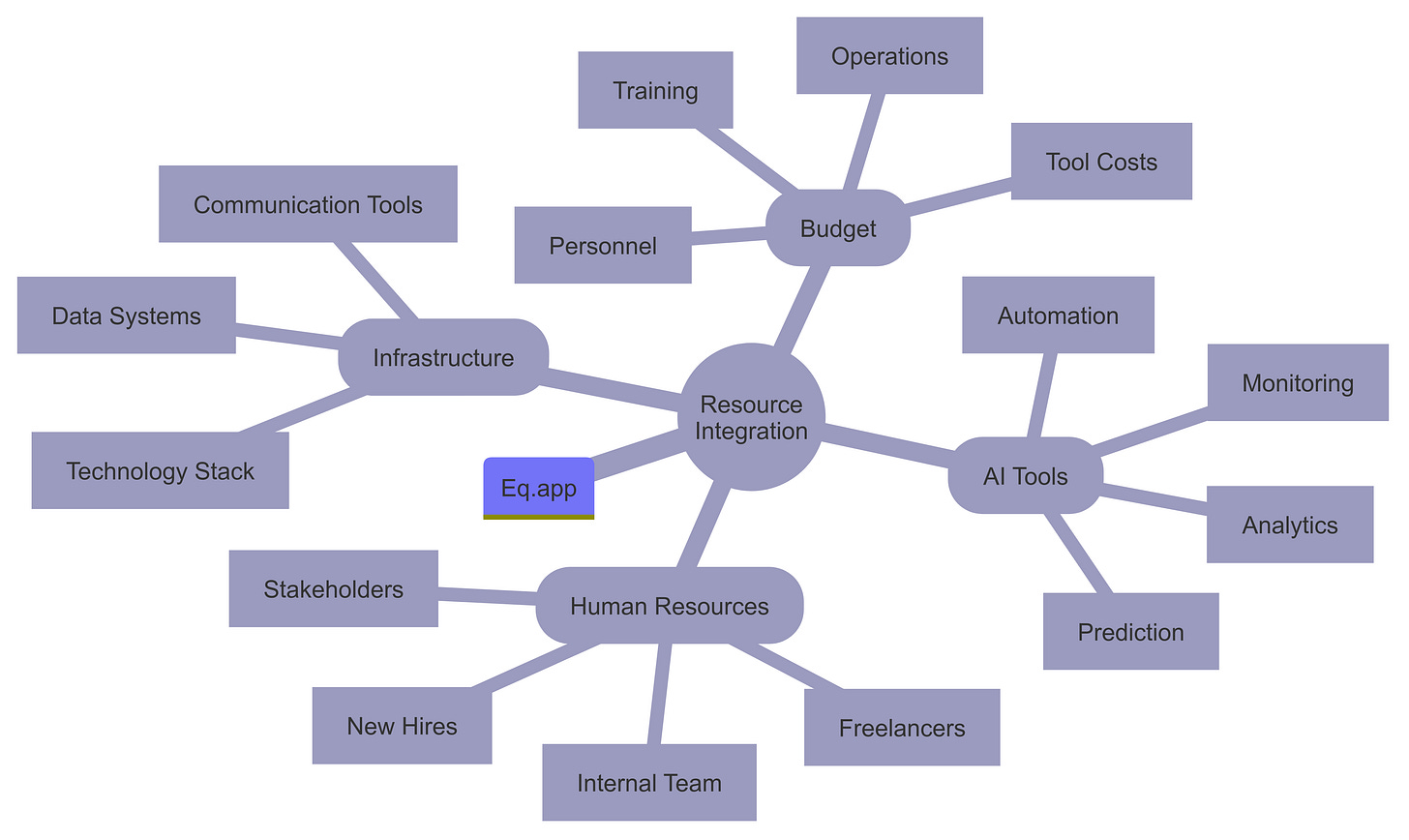2025 Powerful AI Planning Framework
Planning, News, Events
Planning is an ability that sets humans apart from many other life forms. Our capacity to imagine and visualize the future enables us to create. The process of creation is not often discussed, but as I mentioned to a friend recently, you would be surprised at what you can accomplish if you spend just 30 minutes or even a day focusing on the same problem.
Last week, I was on a plane flying back from Atlanta to San Francisco. It was a four-hour flight, and I upgraded to an exit row middle seat for $30, which I was very pleased with.
I happened to be seated next to an air stewardess who had been flying for a number of years.
As I reflected on our industry and its complexities, I began to map out the ecosystem.
A few hours into the flight, she asked me what I did. I replied that I'm in AI. She assumed I was an engineer, although I have my 70 commits to Eq.app on GitHub, which is far from my skill set.
The reason she made that assumption was because I was drafting a sketch of our industry and trying to understand the opportunities. I noticed that my sketch was filled with acronyms, and she expressed her surprise by asking how I was able to do that
I simply spent 30 minutes writing and reflecting. It may seem simple to me, but I realized that not everyone takes that time; it’s not because they can’t, but because it hasn't been prioritized.
After creating this sketch, I formulated our 45-day plan (not a six-month plan) on where we need to focus. As you start planning with others, I encourage you to ask yourself, “What’s really going on?” Consider what's happening in your industry, with your team, and within your company, and then determine what you want to accomplish and devise a plan.
Having a plan in your head is not as powerful as sharing that plan with others, as it allows them to build upon it. When we met with an amazing customer in Atlanta, he said, “I’m a visionary; I need help executing.” We know how to support him. Having a plan enables you to fill in the gaps with resources, whether they are AI tools, freelancers, or full-time hires. Your stakeholders are always trying to get things done, but they may not always be in planning mode. You have an opportunity to plan and deliver effectively.
Here are a few steps for the 2025 planning framework:
2. Think about the resources you’ll need to achieve these objectives. Could it be an AI tool, a freelancer, or a team member?
The essence of planning is being prepared to put a stake in the ground, and acknowledging that you may be wrong. You will always be either over or underestimating, but planning is simply another way of dreaming with a purpose.
Let’s plan for a thriving market!
Tools To Try
EQbuddy: The AI for Fast & Easy Recruiting, connecting you with the right people and knowledge to save you time.
Events
Live Audio:
AI in Recruiting
Thu, Nov 21, 2024, LinkedIn Live
In the News:
Headline: OpenAI Accidentally Deleted Potential Evidence in NY Times Copyright Lawsuit
Source: TechCrunch
📊 Incident Details
Accidental Deletion: OpenAI engineers inadvertently deleted data that could have been crucial evidence in the copyright lawsuit filed by The New York Times and Daily News.
Legal Implications: The deletion of this data adds complexity to the ongoing legal battle, as it was potentially relevant to the case.
🤔 Lawsuit Background
Allegations: The New York Times and Daily News are suing OpenAI for allegedly using their content without permission to train its AI models.
Court Proceedings: The case is being handled in the U.S. District Court for the Southern District of New York.
💡 Takeaways for AI and Legal Communities
Data Management: The incident underscores the importance of robust data management practices, especially in high-stakes legal contexts.
AI and Copyright: This case highlights ongoing tensions between AI development and copyright laws, emphasizing the need for clear guidelines and regulations.
Headline: The Future Of Less Work: Why People Get It And Organizations Don’t
🔑 Key Learnings
Shift in Work Dynamics:
There's a movement from a win-lose power dynamic to a more balanced approach that considers the well-being of employees.
Employees are increasingly demanding flexibility, balance, and purpose in their work lives.
Employee Expectations:
Workers are seeking more autonomy and less rigid structures in their work environments.
The traditional 9-to-5 work model is being challenged as employees prioritize work-life balance.
Organizational Challenges:
Many organizations struggle to adapt to these changing expectations, often clinging to outdated models of work.
There's a need for organizations to rethink their strategies to align with the evolving needs of their workforce.
New Social Contract:
The article suggests forming a new social contract that benefits both employees and organizations.
This involves re-evaluating work practices and creating environments that support employee well-being and productivity.
That’s all for this week!
Stay curious, keep exploring, and until next week— keep pushing boundaries with AI in Recruiting!









